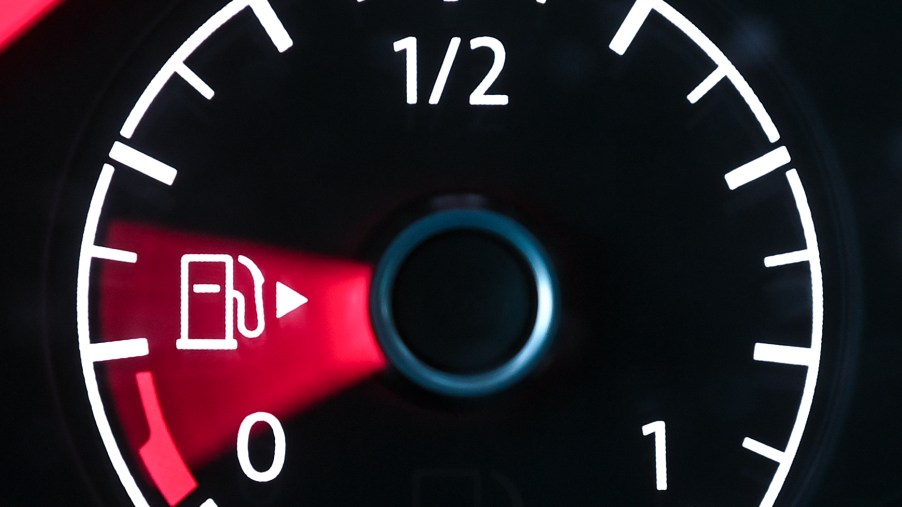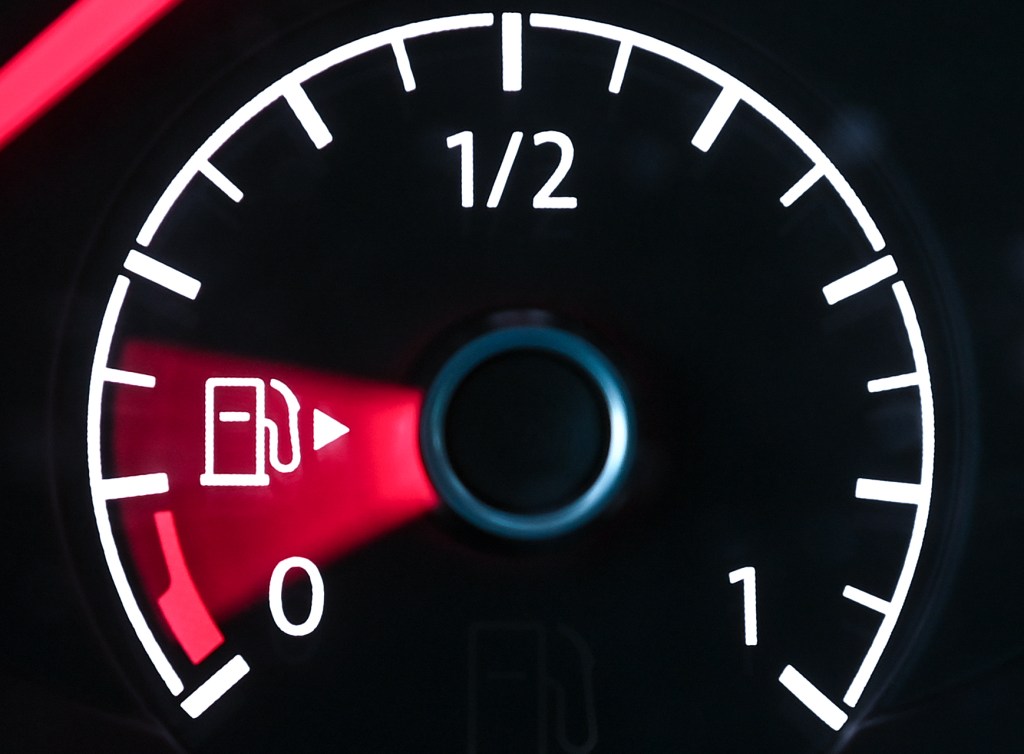
How Many Miles Can a Car Go on Empty?
Trips to the gas station aren’t exactly fun, so it’s tempting to put off refilling your car. It doesn’t seem like a big deal, after all. The gas light is more of a suggestion, and everyone knows you have a few miles before you have to refuel. Right? Actually, no. There are several reasons why it’s a bad idea to wait till the last moment to fill up. It’s better to know what your vehicle’s fuel economy is and fill up before your car hits empty.
Here are the reasons why you should fill up sooner rather than later.
How far can your car go on empty?

Well, that depends on your vehicle. Some cars are designed to go farther than others without fuel, especially hybrids. But if you’re in a traditional gas-powered vehicle, most models can go 30 to 50 miles before completely running out of fuel.
For example, the Chevy Silverado can travel about 33 miles after the gas light comes on. Smaller cars, like the Volkswagen Jetta, can go 43 miles. And the Toyota Corolla can continue cruising for 47 miles, the Pittsburgh Post-Gazette reports.
It’s important to note that these numbers are for newer vehicles. If you have an older car, these numbers will be much lower.
But the above estimates might come as a relief to anyone who often waits until the gas light comes on before filling up. Is that really a good idea, though?
Will driving on empty damage your car?
Just because you can do something doesn’t mean you should. There are many reasons why you shouldn’t wait until the gas light comes on, especially if you do it habitually.
“When you’re running low on gas, it’s best not to push your luck,” Neil Hoff, a refined fuels specialist, told the Pittsburgh Post-Gazette. “Stopping to fill up before your gas gauge hits ‘E’ could save you stress, damage to your car, and time spent on the side of the road.”
So, what sort of damage could happen to your car? According to Hoff, there are dirt and contaminants in your fuel tank. When you allow your vehicle to run on empty, those contaminants can become suspended in the fuel and block the fuel filter.
Another risk to your vehicle is when the gas gets too low, the fuel filter is no longer covered with gas. This can cause it to overheat. There’s also a risk of affecting the power steering and brakes or water in the fuel tank. All of this can lead to expensive repairs that you could’ve easily prevented with a quick stop at a gas station.
Other risks of driving on empty
Another risk you take when running on empty is getting stranded. Anyone who has ever been stuck on the side of the road can testify it’s not an experience they want to repeat.
Getting stranded can be especially dangerous on busy roads. Plus, it’s scary to be alone in an unfamiliar area with no cell service. Though most cellular providers would have you believe their towers are so numerous you could go anywhere and still get a signal, dead zones still exist.
So to avoid lugging a gas can several miles or endangering yourself by flagging down a stranger, keep your gas tank filled up. And try not to let it drop below a quarter-tank to avoid damaging your car.
RELATED: How Much Does Using Your Car’s AC Affect the Fuel Economy?


